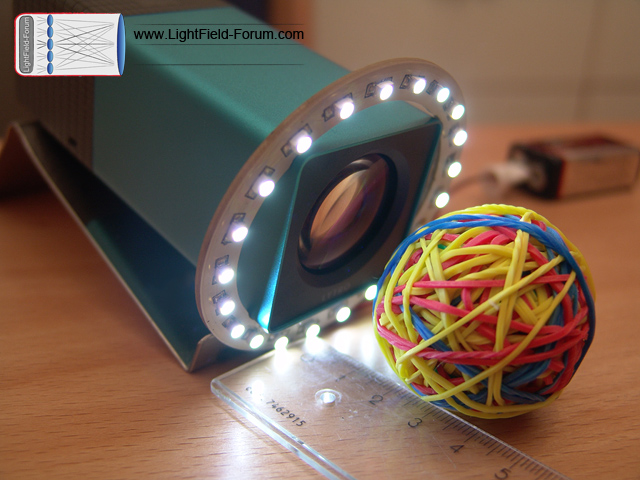DIY Lytro ring flash: first test
Since the Lytro camera doesn’t come with a flash, we thought about making my own DIY ring flash for some time. Today, finally, the most important component has arrived in the mail: a little LED ring that cost as little as 3.50 €.
Here’s a quick photo of my first crude attempt to take close-up pictures with a homemade LED ring flash (ring light):
What’s more interesting, though, are the test photos taken with the Lytro camera:
There are two sets of LightField test pictures in our Lytro album, one in Everyday Mode (minimum focus distance: approx. 10 cm) and one in Creative Mode (no minimum focus distance, limited depth of field). You can check them out here: lytro ring flash, part 1.
http://pictures.lytro.com/me/pictures/231774
We’ll play around with this some more over the next days (maybe add a diffuser and simple enclosure), and will post all the details when the project is a few steps further ahead.


![Cyber Monday: Lytro offers 8 GB Lytro Camera and Bundle for 199 Dollars [US only]](http://lightfield-forum.com/wordpress/wp-content/uploads/2013/12/lytro-graphite-bundle.jpg)





Great idea / execution!
As a former owner, I found the Lytro to be a cool gadget. However, overall it simply disappointed me with the quality of output…. Hopefully this is improved with software upgrades in the future, but I’m hesitant to recommend it otherwise.
I am praying for a new LCD screen on Lytro second generation – maybe a Retina display. The reality for me is outdoor shooting is a crap shoot. I can’t see the screen – need to make some sort of hood. It can’t be just because I am in Hawaii – today was cloudy and it was still a crap shoot. I have 20/15 vision – the screen is just lousy. Today I took 122 shots of which I cloud post about a dozen because I could not see if the ocean was level, if the depth of field was really set up properly – until I got the pix on to my mac book pro. I’m one of your biggest fans but it is time for a slightly bigger camera, with a bitchin’ bright screen. I know that these shots on your website of the screen have to be photoshopped in. I have never seen anything as bright on my Lytro…
Rabbett, try tilting the camera left or right when you shoot. This drastically increases the display’s vertical field of view.